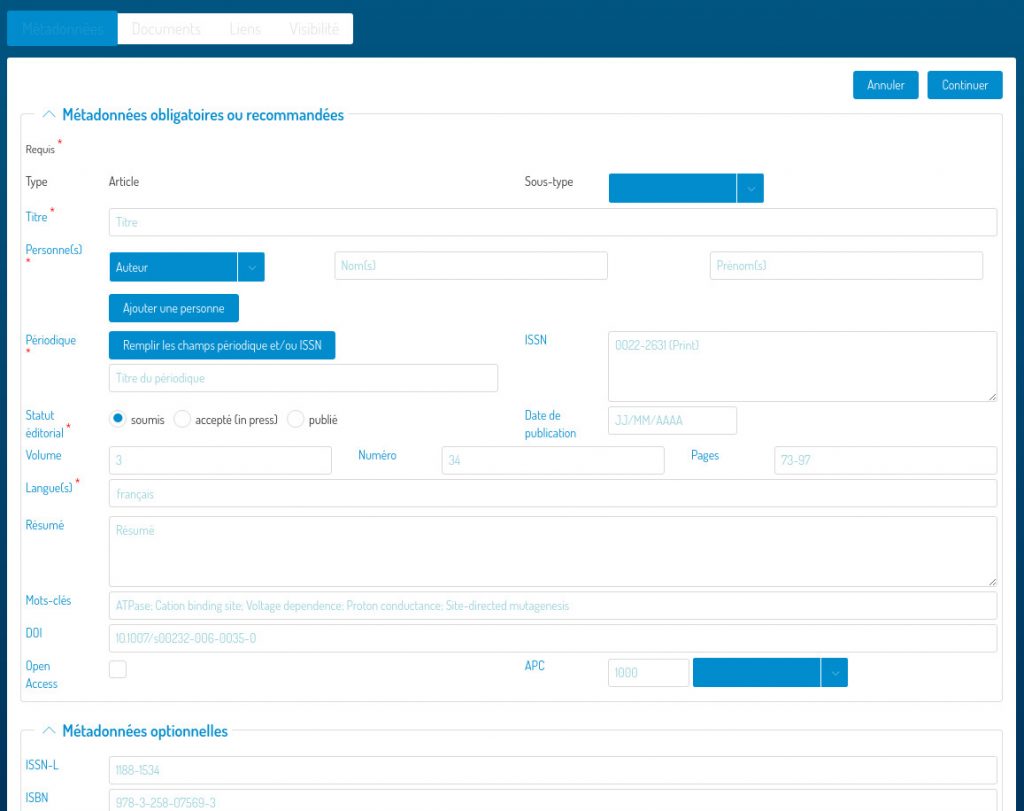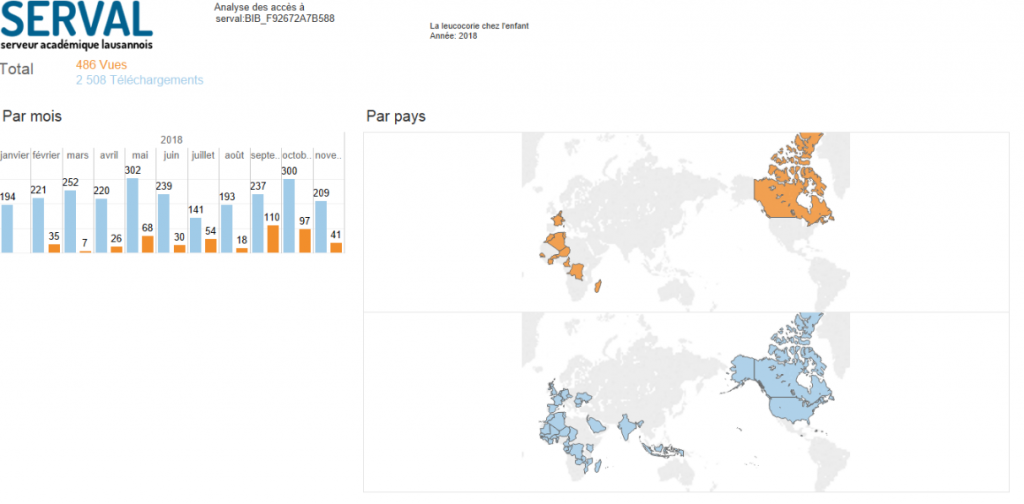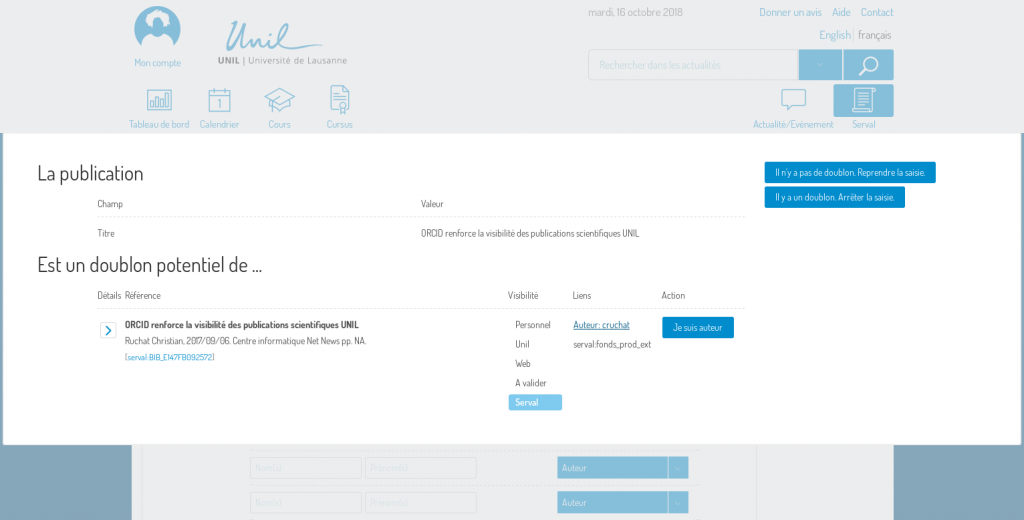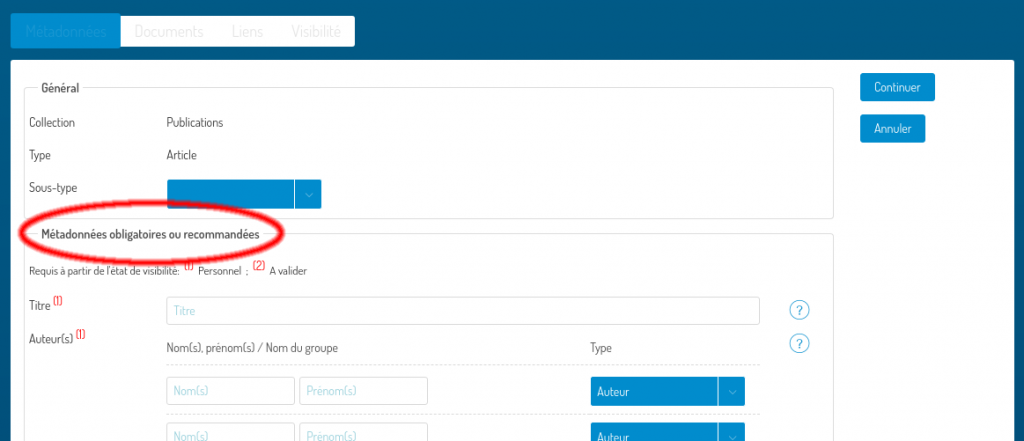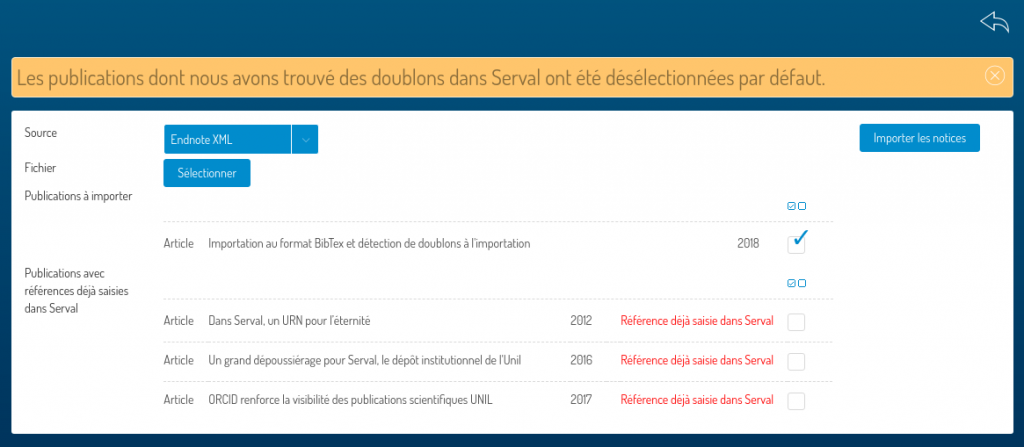The following features will be added in production on Wednesday, May 8, 2019:
Single field “person(s)”
Entry in a single list of people instead of an entry in separate fields (author (s), translator (s), …):

It is possible to change the order by moving a line with a drag and drop.
Plan S – “Open Access” et “APC” fields
The fields “Open Access” and “APC” (publication fees), required by plan S, have been added in the entry:

New presentation of the fields in the metadata step
The layout of the metadata page has been modified.
The interface is now much more compact because all types of authors can be entered in the same “person” field. The help text of a field can be accessed by clicking on its name.
The navigation buttons have been moved to the top of the page, and the different sections of the interface (mandatory or recommended/optional metadata) can be hidden/shown by clicking on their title.
